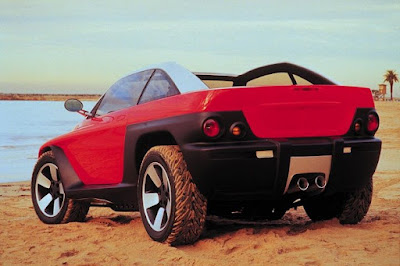Radical ONES Before we discuss about this unique motorcycle, maybe it's a good idea to know first what makes something look unique and said to be very radical. It's easy something to be unique and radical, just a matter to make it looks unusual and tends to be eccentric (out of the box) when compared to most of its kinds. Isn't that right?😄
 |
| The Mortagua Fighter 10 'Violent Dream' is the latest creation of Carlos Rodrigues and said to use a Honda 600 Shadow engine with a unique front-wheel drive system. (Picture from: LivingWithGravity) |
Well, so are the two-wheeled vehicles that we will discuss this time. As quoted of Visordown, this unique bike named the Mortagua Fighter 10 'Violent Dream' is built to be a part of the fun of the Expo Moto 2022 motorcycle shows to see the weird things that creep between the lines of the motorcycle models attended there.
The unique motorbike is the work of Carlos Manuel Almeida Rodrigues which he did at a workshop based in Mortagua city in the north of Portugal. The creator was previously also known for his expertise in making such of a kind custom motorcycles. The first edition was built in 1995, and by now the looks have completely changed. This is truly one of the most aesthetically radical motorbikes you can find ever.
Even one of his past works, entitled the Mortagua Fighter 8 'Disturbed Cadaver' custom motorcycle powered by a Suzuki GSX R-1100 engine, won the title of 'Best of Streetfighter' at the grand event of the International Custombike Championship Germany (ICCG) in Bad Salzuflen, Germany back in the 2018.
 |
| Carlos Rodrigues posed along with his custom motorcycle creation back in the 2018 titled the Mortagua Fighter 8 'Disturbed Cadaver' powered by a Suzuki GSX R-1100 engine. (Picture from: UltimateMotorcycling) |
 |
| It's seems the Mortagua Fighter 10 'Violent Dream' of Carlos Rodrigues is inspired by this fictional fighter jets by the designer Project Aces (the developer of the Ace Combat video game), just pinning a wheel on either end. (Picture from: Visordown) |
Carlos Rodrigues has faithfully created this unique and impeccable line of futuristic style motorcycles with such intricate details which are generally described in the drawing of sharp and tapered lines of the world's aviation design that are done with the polish of his hand skills as a glassmaker with 25 years of experience.
 |
| The Mortagua Fighter 9 'Infernal Chaos' built by Carlos Rodrigues back in the 2019 and powered by a Suzuki Bandit 600 engine back in the 2019. (Picture from: BikeNationMag) |
Unfortunately, there is no information about technical matters such as the engine used and horsepower, torque it produces, as if it is not important. Maybe it could be said less prestige than the sensation presented by this motorcycle. However, that does not mean there is no information at all about it. As quoted of OtoPlus, the Mortagua Fighter 10 is said to use a Honda 600 Shadow engine with a front-wheel drive system.
 |
| Carlos Rodrigues posed along with his latest custom motorcycle creation in 2022 titled the Mortagua Fighter 10 'Violent Dream'. (Picture from: SoyMotero.net) |
It is not surprising to say that there is not a single custom motorcycle creation made as radical as this, which the creator has made in such a way as the series ranging from the Fighter 1 to the Fighter 10 over a period of almost 30 years, shows his high and classy level of creativity that non-creative ordinary people like us could not understand.
 This strange motorbike literally might be able to create a strange driving sensation too. But clearly, it's not a motorcycle for cruising down the track, or for pushing the edges of scenic mountain roads. It's specially to be driven slowly, through a city or coastal town, at night, under yellowed artificial light, while people would turn their heads instantly and scorn its obnoxiously extreme appearance.
This strange motorbike literally might be able to create a strange driving sensation too. But clearly, it's not a motorcycle for cruising down the track, or for pushing the edges of scenic mountain roads. It's specially to be driven slowly, through a city or coastal town, at night, under yellowed artificial light, while people would turn their heads instantly and scorn its obnoxiously extreme appearance.Kept spur your adrenaline on the power of the two-wheeled monster and
stay alive with true safety riding. May God will forgive Your sins and
so does the cops...... *** [EKA | FROM VARIOUS SOURCES | MORTAGUA FIGHTER | EXPOMOTO PORTO | LIVING WITH GRAVITY | SOYMOTERO.NET | VISORDOWN ]
Note: This blog can be accessed via your smart phone


































